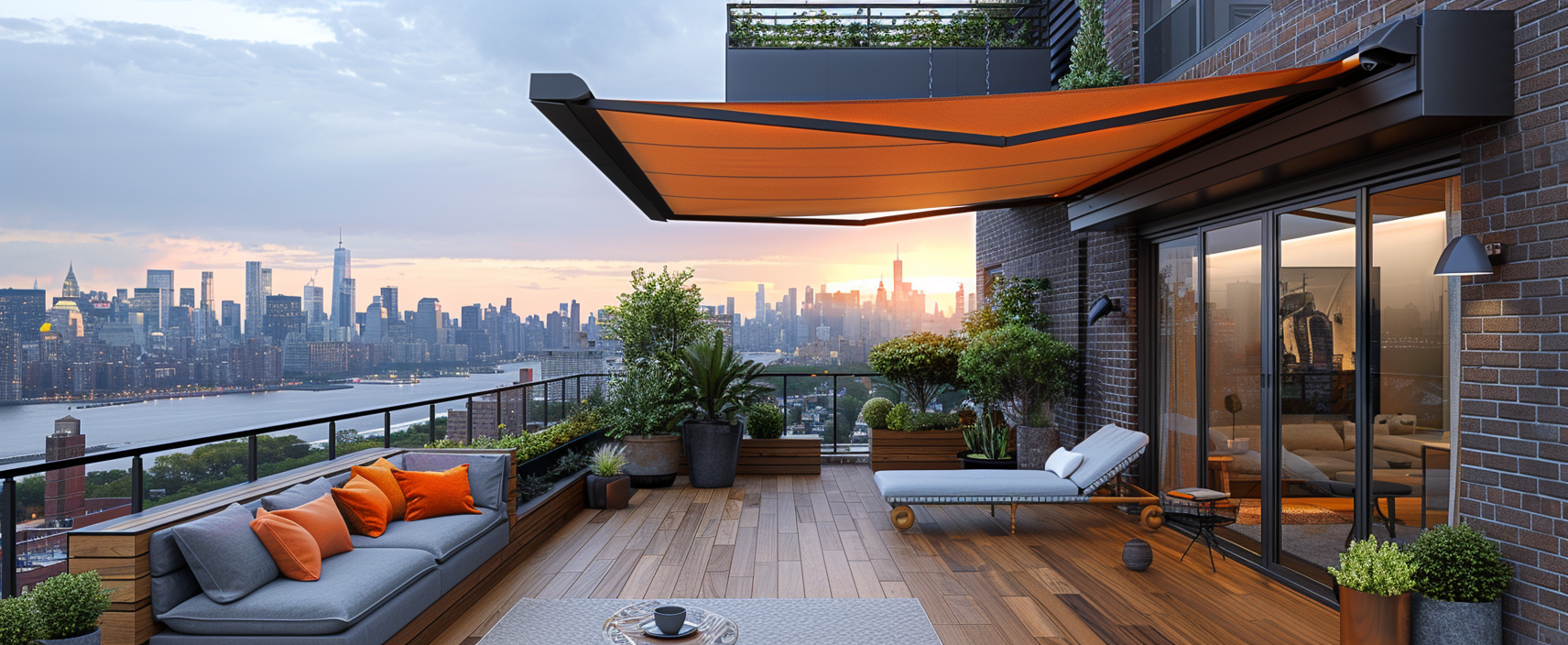What is an Awning?
Ever enjoyed a cozy café moment under a shaded awning? Awnings are more than just functional; they add charm and comfort to any outdoor space! From retractable to stationary, there’s an awning for every need.

Awning
Have you ever sat beneath a shaded area outside a café, enjoying the gentle breeze without the harsh glare of the sun? Or perhaps you've admired the charming addition to a neighbor's window that seems to add both character and function. These are examples of awnings, a seemingly simple addition to buildings that can transform outdoor spaces. In this article, we'll dive deep into what awnings are, their types, benefits, and how they can enhance your living or business space.
Understanding Awnings
Awnings are coverings attached to the exterior wall of a building. They are designed to provide protection from the sun, rain, and other elements, making outdoor spaces more comfortable and usable. But awnings are more than just functional; they can also be a stylish addition to any property, offering a blend of aesthetics and utility that can elevate the look of your home or business.
History of Awnings
The concept of awnings goes back centuries, with evidence of their use in ancient Egyptian and Syrian civilizations. Originally, they were woven mats that shaded market stalls and homes from the desert sun. Over time, the materials and designs evolved, leading to the awnings we recognize today. This historical journey reflects not only changes in technology and materials but also the enduring need for protective and comfortable outdoor spaces.
In the 19th century, awnings became a common sight in the bustling streets of America, adorning storefronts and homes alike. They were a practical solution for controlling indoor temperatures before the advent of air conditioning, showcasing the blend of functionality and design that continues to define awnings today.
Types of Awnings
There's a wide variety of awnings available, each suited to different needs and preferences. Here are a few common types:
- Retractable Awnings: These offer flexibility, allowing you to extend or retract them based on the weather conditions or your personal preference.
- Stationary Awnings: Fixed in place, these are designed for permanent shade and protection in a specific area.
- Motorized Awnings: Offering the ultimate convenience, motorized awnings can be extended or retracted with the push of a button.
- Portable Awnings: These can be moved and set up wherever needed, providing flexible shade options.
Each type has its own set of advantages, whether it's the convenience of a motorized system or the adaptability of a portable awning.
Benefits of Awnings
Awnings bring a multitude of benefits, from enhancing outdoor living spaces to reducing energy costs. Let's explore some of these advantages in more detail.
Energy Efficiency
By shading windows and reducing direct sunlight, awnings can significantly lower indoor temperatures, especially during the hot summer months. This can lead to reduced reliance on air conditioning, cutting down on energy consumption and costs. It's a simple yet effective way to make your home or business more energy-efficient.
Extended Living Spaces
Awnings can transform outdoor areas into comfortable living spaces, regardless of the weather. Whether it's creating a shaded retreat in your garden or expanding the usable space of a café, awnings make it possible to enjoy the outdoors without worrying about the sun or rain.
Protection from the Elements
Beyond providing shade, awnings also protect against rain, helping to keep outdoor seating areas dry and usable even during a downpour. They can also shield furniture from fading and damage caused by UV rays, extending the life of your outdoor furnishings.
Enhanced Aesthetics
With a wide range of styles, colors, and materials available, awnings can be a stylish addition to any property. They offer an opportunity to enhance the architectural design of your home or business, adding both character and curb appeal.

Choosing the Right Awning
With so many options on the market, selecting the right awning can seem daunting. Here are some tips to help you make the best choice for your needs.
Consider the Purpose
Think about what you want to achieve with an awning. Is it primarily for shade, or are you looking to extend your outdoor living space? Your primary goal will influence the type of awning that's best for you.
Material Matters
The material of your awning not only affects its look but also its durability and maintenance needs. Fabrics offer a classic look but may require more upkeep, while metal awnings are durable and low maintenance.
Style and Design
Choose an awning that complements the architectural style of your property. Whether you prefer a modern, sleek design or a more traditional look, there's an awning to match.
Professional Installation
For the best results, consider professional installation. A skilled installer can ensure that your awning is securely attached and properly positioned for optimal performance and aesthetics.
Additional Considerations for Awning Installation
When installing an awning, there are a few additional factors to keep in mind to ensure you get the most out of your investment. Proper placement is crucial; consider the angle of the sun throughout the day to maximize shade coverage. Additionally, check local regulations and permits that may be required for installing an awning, especially if you live in a historic district or a community with strict architectural guidelines.
Maintenance Tips for Awnings
To prolong the life of your awning, regular maintenance is key. Depending on the material, you may need to clean it periodically to prevent mold or mildew growth. Inspect the awning for any tears or loose parts that may need repair. Proper care will ensure that your awning remains both functional and visually appealing for years to come.
Conclusion
Awnings are a versatile and practical addition to any property, offering benefits that range from energy efficiency to enhanced outdoor living spaces. Whether you're looking to protect your home from the sun, create a comfortable outdoor area for your business, or simply add a touch of style to your property, there's an awning to suit your needs. By understanding the types, benefits, and considerations for choosing the right awning, you can make an informed decision that will enhance your space for years to come.
Quick facts
What is the purpose of an awning?
An awning provides shade and shelter, protecting windows and doors from sun, rain, and other weather elements. It can also reduce indoor cooling costs by blocking direct sunlight.
What is the difference between a canopy and an awning?
A canopy is a freestanding structure, while an awning is typically attached to a building. Canopies provide portable shade, while awnings are more permanent fixtures.
What is the difference between an awning and a pergola?
An awning is a fabric or metal covering attached to a building, primarily for shade, while a pergola is a freestanding or attached open-roof structure designed for outdoor sitting areas, often supporting climbing plants.
What is an awning in camping?
In camping, an awning refers to a lightweight shelter or extension attached to the side of a vehicle or tent, providing extra outdoor space for shade, cooking, or storage.
What is an awning used for?
An awning is used to provide shade, protect outdoor areas from weather elements like rain and sun, and enhance the aesthetic appeal of a building or space.
What is the full meaning of awning?
The term 'awning' refers to a protective covering, typically made of fabric or metal, attached to a structure to offer shade or shelter.
What is a roof awning?
A roof awning is a protective structure attached to the roofline of a building, designed to provide shade and shield areas below from sun and precipitation.
How many types of awnings are there?
There are several types of awnings, including retractable, stationary, freestanding, motorized, and portable options, each suited for specific needs and spaces.
What is a permanent awning called?
A permanent awning is often called a stationary or fixed awning, designed to remain in place year-round, providing consistent protection and shade.
What is the difference between an awning and a sunshade?
An awning is typically a fixed or retractable structure providing long-term shade and weather protection, while a sunshade is often temporary and portable, designed to block sunlight specifically.
What is the most durable awning?
Metal awnings, such as those made from aluminum or steel, are considered the most durable, offering long-lasting protection against harsh weather conditions.

Dane Hurtubise
Co-founder & CEO of Spoken
Dane Hurtubise is the Co-founder & CEO of Spoken. He has led two venture-backed companies and is a two-time Y Combinator alum. Prior to Spoken, Dane sold his previous company, Parklet, to Greenhouse Software where he served as VP of Platform and Partnerships. An avid runner, cyclist, and Pilates enthusiast, Dane holds a BS in Electrical and Computer Engineering from the University of Texas at Austin.
Read more

